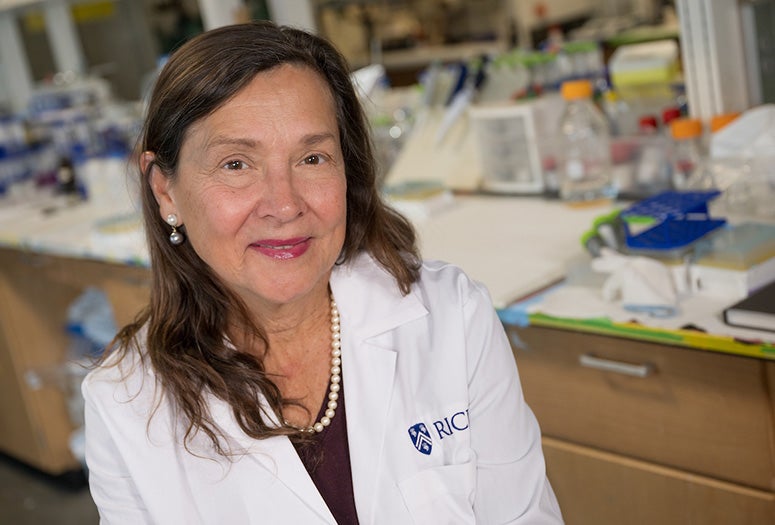A Multidisciplinary University Research Initiative (MURI) project proposal led by Rice University’s Naomi Halas won $7.5 million over five years from the United States Department of Defense (DOD) Air Force Office of Scientific Research (AFOSR).

MURIs are some of the most competitive and sought-after academic research grants in the U.S. The awards support multidisciplinary teams of researchers tackling defense-related projects in areas of strategic importance to the DOD. This is Halas’s fifth MURI grant on which she is the lead investigator. In addition to the project led by Halas, Rice researchers were involved with two additional winning proposals, representing 10% of the total awards.
Halas led a project titled, “Combining Nonequilibrium Chemistries with Atomic Precision,” which competed for an award in the “plasmon-controlled single-atom catalysis” category. The project addressed the need for more energy-efficient and less protocol-intensive chemical processes, bringing together two distinct approaches to chemistry. The first involves using light to drive chemical reactions while the second approach deals with single-atom “reactors” to catalyze chemical reactions that are nearly 100% specific in terms of reaction products.
Halas is an engineer, chemist, physicist and ⎯ together with Rice physicist and engineer Peter Nordlander ⎯ a pioneer of plasmonic photocatalysis, a chemical process that involves the use of light-activated reactive sites, called plasmons, on the surface of metallic nanoparticles. Plasmons make metal nanoparticles act like antennas, and specially designed reactor sites on their surfaces can then carry out chemical reactions at a fraction of the energy expenditure of conventional industrial catalysts, which typically need high temperatures or pressures to work.
“This project is all about pushing the boundaries of what’s possible in chemistry,” Halas said. “Plasmonic photocatalysis is the most promising example of nonequilibrium chemistry that gives rise to unique and unconventional chemical reaction pathways. Pairing it with the precise control over chemical bonds and reaction outcomes achieved through single-atom reactive sites is revolutionary.”
Halas, who was named University Professor in 2023, perfected several light-activated nanoparticle catalysts, demonstrating their potential use in a wide range of domains, including water treatment, optoelectronics, sensing, advanced materials etc., and translating two of the resulting applications commercially, for localized cancer treatment (Nanospectra Biosciences) and sustainable hydrogen fuel production (Syzygy Plasmonics). The latter research spin-off, which has commercialized a light-based chemical reactor, was directly informed by work that the current MURI project also builds on.
The research plan includes the synthesis of innovative single-atom reactor systems; their characterization using atomic-scale imaging and spectroscopies, time-resolved spectroscopic methods to follow the dynamics of chemical reactions; and the analysis of a range of chemical processes and transformations of direct import to the DOD.
Nordlander, Wiess Chair and professor of physics and astronomy at Rice, is a co-PI on the grant. Other co-PIs are Phillip Christopher University of California, Santa Barbara; Emily Carter, Princeton University; Charles Sykes, Tufts University; and Tianquan (Tim) Lian, Emory University.
Other Rice researchers who were part of the cohort of 30 MURI projects funded this year are Pulickel Ajayan, who is contributing to a project titled “Compositionally Complex Ceramics via Knowledge Guided Pyrolysis for Hypersonics;” and Lane Martin, who is contributing to a project titled “Piezoelectric Materials Interfaces with Semiconductors for Integrated Quantum Systems.”

